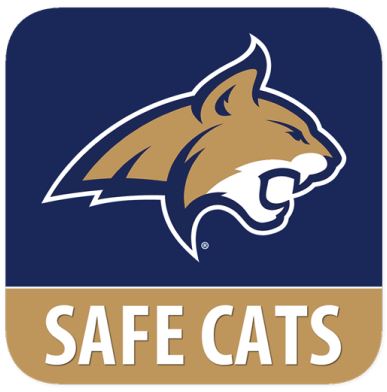Winter Weather Preparedness
During Severe Weather:
- Find shelter as soon as possible, and stay indoors. If you are trapped in a car, stay inside the car. Do not travel unless absolutely necessary.
- Check on elderly or disabled relatives and neighbors. Also, ensure your pets are safe and warm.
- If you need to go outdoors, dress for the season:
- Wear several layers of loose fitting, warm clothing. Outer garments should be tightly woven and water repellent.
- Mittens are better than gloves to stay warm.
- Wear a hat; most body heat is lost through the top of the head.
- Cover your mouth with a scarf to protect your lungs from cold air.
- Be careful when shoveling snow. Overexertion can lead to heart attack – a major cause of death in the winter.
- Watch for signs of frostbite: loss of feeling and white or pale appearance in the extremities such as fingers, toes, ear lobes or the tip of the nose. If symptoms are detected, seek medical help immediately.
- Watch for signs of hypothermia: uncontrollable shivering, disorientation, incoherence, slurred speech, drowsiness, apparent exhaustion, and possible memory loss. If symptoms are detected, get the victim to a warm location, remove any wet clothing, warm the center of the body first and give warm, non-alcoholic beverages if the victim is conscious. Get medical help as soon as possible.
After Sever Weather:
- Stay off roads to allow plowing operations to proceed smoothly.
- Help dig out fire hydrants and storm drains in your neighborhood.
- Avoid parking too close to corners, allowing Public Safety vehicles and plows to maneuver safely.
- Be aware of children playing in the streets, particularly climbing on or running out from behind large snowdrifts. Parents should remind their children to be aware of plowing operations and traffic.
- Clear exhaust vents from Direct Vent Gas Furnace Systems to avoid carbon monoxide poisoning.
- Do not run your automobile until exhaust pipe has been cleared of snow.
- Make sure backup generators and alternative heating sources are well ventilated.
- Take your time shoveling to avoid overexertion.
- Use care around downed power lines. Assume a down wire is a live wire and report it to local authorities.
- Watch out for overhead hazards such as broken tree limbs and ice on roofs and wires.
- Remove heavy snow from roofs if safe to do so. Make sure gutters and drains are clear.
- Be cautious while walking on snowy, icy sidewalks.
Auto Safety Tips
- About 70% of winter deaths related to snow and ice occur in automobiles.
- Assemble an Emergency Car Kit to keep in your vehicle.
- Keep your gas tank full and check your windshield wiper fluid.
- Install winter tires with adequate tread.
- Ensure your vehicle is maintained and in good working order.
- Keep a windshield scraper, small broom and shovel for ice and snow removal.
- Plan long trips carefully; check the latest weather forecasts and road conditions. If bad weather is forecasted, drive only if absolutely necessary.
- Travel during daylight hours, keep others informed of your schedule and route, and whenever possible take another person with you. Stay on main roads, as they are more likely to be plowed and cleared.
- If a blizzard traps you in your car, pull off of the highway. Turn on hazard lights
and hang a distress flag from your radio antenna or window.
- Remain in your vehicle where rescuers are more likely to find you. Do not set out on foot, unless you can see a building close by where you know you can take shelter.
- Run the engine and heater about 10 minutes each hour to keep warm. When the engine is running, open the window slightly for ventilation. Periodically clear snow from the exhaust pipe.
- Exercise to maintain body heat, but avoid overexertion. In extreme cold, use road maps, seat covers and floor mats for insulation. Huddle with passengers.
- Take turns sleeping. One person should be awake at all times to look for rescue crews.
- Drink fluids to avoid dehydration.
- Be careful not to waste battery power. Balance electricity energy needs: the use of lights, heat and radio.
- At night, turn on the inside light so work crews and rescuers can see you.
Know the terms used by weather forecasters:
Winter Storm Watch – Be alert, a winter storm is likely in your area. Tune to radio or television for more information.
Winter Weather Advisory – Winter weather conditions are expected to cause significant inconveniences and may be hazardous, especially to motorists.
Winter Storm Warning – Take action, the storm is in or entering the area.
Blizzard Warning – Snow and strong winds combined will produce blinding snow, near zero visibility, deep drifts, and life-threatening wind chill. Seek refuge immediately.
Freezing Rain – Rain that freezes when it hits the ground, creating a coating of ice on roads, walkways, trees and power lines. If a ½ inch or more of freezing rain is forecast, an Ice Storm Warning will be issued.
Wind Chill Advisory / Warning – Combination of wind and cold resulting in temperatures that feel -15F to - 24F (Advisory) or -25F or colder (Warning) for more than 3 hours. Can be life threatening if exposed for an extended time.

